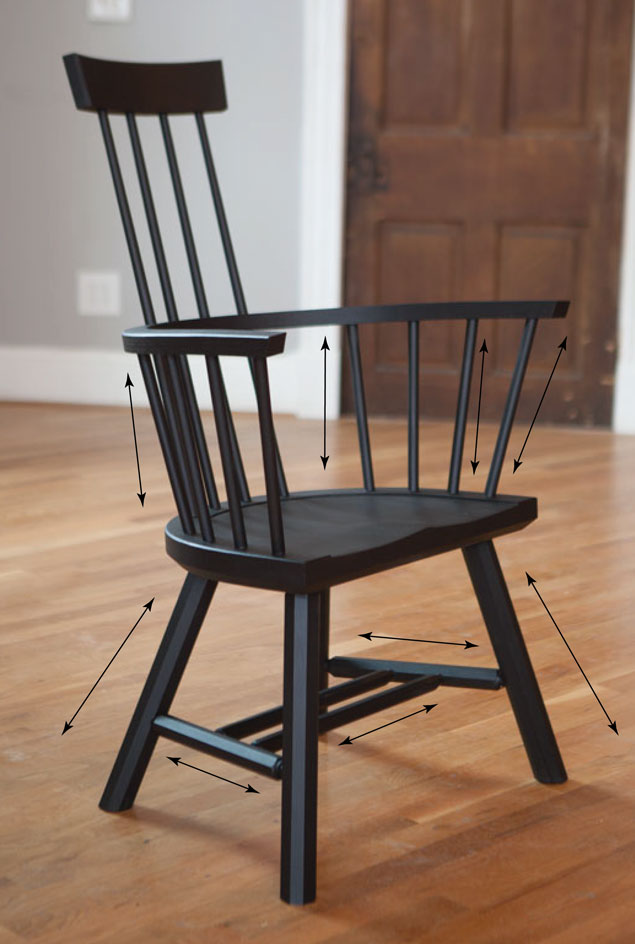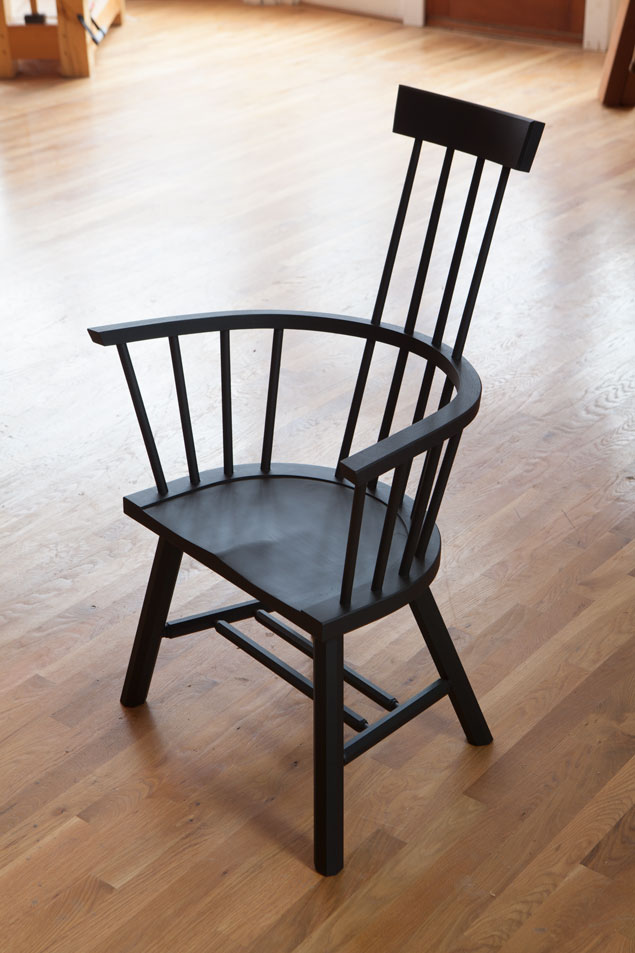We may receive a commission when you use our affiliate links. However, this does not impact our recommendations.
If you’ve ever used a hand-cut rasp or a hand-filed saw you know how their tiny imperfections from handwork make the tool cut smoother. When it comes to making chairs, the small handmade imperfections are what give it its strength.
If you build a lot of casework, I am sure you are grunting in displeasure. Accuracy makes all your pieces go together easily and tightly, right?
Well in chairmaking, that same sort of accuracy is undesirable. Here’s why:
Years ago I repaired a factory-made Windsor chair for a family member. The chair had fallen to pieces. So I cleaned off all the old glue and reassembled the chair. It went together perfectly and with great ease – all the spindles dropped nicely into their mortises.
Within five years, the chair was coming apart again.
Part of the problem with perfect factory chairs is that they don’t have any tension in them. All the parts line up (thank you, CNC) and go together with ease.
When a flawed human makes a chair, every angle of every joint is off by a half degree or more. These imperfections push the seat, arms and crest rail in random directions. As a result, every handmade chair has to be coaxed together with a mallet.
Additionally, many chairmakers introduce some tension to the undercarriage by making all the stretchers about 1/8” longer than they should be. This forces the feet to push away from the perimeter of the seat. And it racks the heck out of the undercarriage, making it incredibly robust.
All of these facts should be a great comfort for the beginning chairmaker. When you are drilling your holes, being a little off will make it harder to assemble the chair. But it will also make the chair harder to take apart.
One word of advice: Don’t try to be inaccurate. You’ll either be dead-on balls or so inaccurate that the chair won’t go together (been there). Just try to do your best. Your humanity will do the rest.
— Christopher Schwarz
Here are some supplies and tools we find essential in our everyday work around the shop. We may receive a commission from sales referred by our links; however, we have carefully selected these products for their usefulness and quality.












I don’t have an engineering background, but this post to me seemed like common sense-at least to anyone who has been making chairs by hand for some time.
The rule being, not that inaccuracy makes for a strong chair (which is not what Chris is saying), rather a maker is highly accurate in sizing and shaping tenons/mortises/stretchers/etc, but that those slight variations-mostly in drilling mortises-put the entire piece into tension and make it come together snug and remain thus.
Though as Chris pointed out, just a little too much of that variation and the thing will simply not come together (also been there)-so there is very much a fine balance to achieve.
So this is why the little chairs I make for my 2 year old grandchildren are so strong!
I strongly disagree. The strength of a chair does not come from imperfection.I am a hand tool chair maker. The great body of my work involves the traditional two slat post and rung chairs. But I have also been fortunate to make Windsors under Dave Sawyer and Curtis Buchanan. I do not know what a CNC machine is but the factory made chair you describe very likely failed and re-failed due to its lack of proper interference mortise and tenon joints. I have seen a good number of them.The interference joint where the kiln dried tenon will swell into a slightly larger diameter than the mortise is not present. And the stable ray planes of both mortise and tenon face each other in the vertical plane. The factory chair you cite as support for your position used only glue with no interference. It was truly weak and imperfect the day it left the factory. I fail to see its significance for the traditional chair maker.
You also cite the Windsor medial stretcher as an example of strength through imperfection. It is an intentional necessary compromise. For Windsors, aesthetics call for the interior medial stretcher rather than a projecting enclosing medial stretcher. I use the enclosing medial stretcher on my shop’s low bench and modern tables. It is incredibly strong but lacks the grace of the Windsor understructure. However the lengthening of the Windsor medial stretcher is an intentional compromise. The medial stretcher joint is strengthened vs. the stretcher’s length opposing the seat and post mortise and tenon.It is a good call given the aesthetics. It is the best you can do, not an imperfection.
Think of the multiplicity of decisions in traditional chair making regarding:
Wood
Grain
Moisture
Tempature
Length
Flatness
Straightness
Diameter
Orientation
Angularity
Curvature
Comfort
Beauty
Imperfection in any of these decisions weaken the chair.
Accuracy in all is crucial.
CNC word does not need to be dead on as is done in the factory.
Those little imperfections that you speak of can be added to the CAD design prior to exporting the design to g-code with the end result being the same difficulty in assembling.
Just one thing though, if you decide to play with these 1 degree parameters in your CNC design, you will find out very quickly just how far off the typical chair maker is when he bores all those holes as the CNC machine will be very precise in the degreed offset.
The reason factories won’t design their chairs with these little imperfections is because it will slow down the assembly time. Rather than having a machine do the assembling, which is possible with precise alignments, a human being would have to manually assemble and hammer the chairs together.
Anytime you introduce the time it takes for manual labor to do the work, you are reducing the potential profits that the company and shareholders can earn. And anytime you reduce the potential profits that the company and shareholders can earn, they squeal worse than a pig in a greased pig chase.
this point is almost pedantic, since the intent of making the stretchers longer is clear… but my mechanics background is fighting to be heard!
The stretcher being longer puts it in residual *compression*, so that when a person sits on it and adds tension, the net force experienced by the stretcher joints is still compression and the chair stays put.
I think you just came up with another Schwarzian axiom, “Do your best, humanity will do the rest.” LOL
If what you say is true (and I have no reason to doubt you) then it would seem to me that you could program in some randomness into a CNC (I don’t own one) so that every joint would be off by some random error amounting to around half a degree. If done correctly/scientifically this would take of the CNC problem of being too accurate. But don’t tell them.
If imperfection is the heart of a good chair, I’m going to be an amazing chair maker.
Gorgeous chairs!